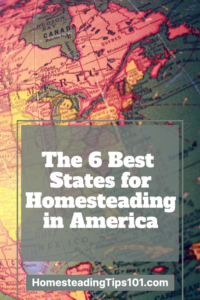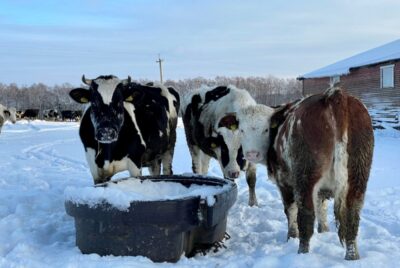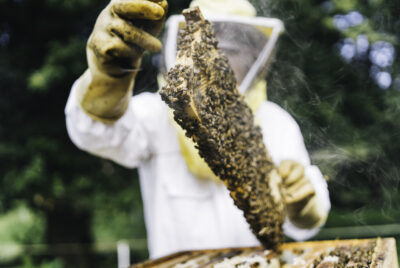The 6 Best States for Homesteading in America
"We may earn a commission from purchases made using our links. Please see disclaimer."
As a homesteading enthusiast and advisor, I am often asked about the best states for embarking on the fulfilling journey of homesteading. The decision to start a homestead is an exciting one, but it’s crucial to choose a state that aligns with your aspirations and requirements. Factors such as climate, land availability and cost, water accessibility, homestead laws, state and local regulations, and community support play vital roles in determining the suitability of a state for homesteading. In this article, I will introduce you to the six best states for homesteading, considering these factors and providing you with helpful suggestions and reasons for my recommendations.
Introduction
Homesteading, the practice of self-sufficiency through farming or living off the land, has experienced a resurgence in recent years. People are increasingly drawn to the idea of reconnecting with nature, growing their own food, and forging a simpler, more sustainable lifestyle. However, successful homesteading requires careful planning and consideration, starting with the selection of the right state to establish your homestead.
Factors to Consider for Homesteading
Before delving into the specific states, let’s explore the key factors you should keep in mind when deciding where to begin your homesteading adventure.
1. Climate
 The climate of a state significantly impacts the types of crops and livestock that thrive in the region. Different plants have specific temperature and moisture requirements, and it’s essential to choose a state with a climate conducive to your desired agricultural pursuits. Additionally, consider the type of weather you are comfortable living in year-round, as extreme temperatures or prolonged periods of rain or drought can pose challenges. Take into account the average high and low temperatures, rainfall, snowfall, and likelihood of extreme weather events like droughts, floods, or hail when evaluating climate.
The climate of a state significantly impacts the types of crops and livestock that thrive in the region. Different plants have specific temperature and moisture requirements, and it’s essential to choose a state with a climate conducive to your desired agricultural pursuits. Additionally, consider the type of weather you are comfortable living in year-round, as extreme temperatures or prolonged periods of rain or drought can pose challenges. Take into account the average high and low temperatures, rainfall, snowfall, and likelihood of extreme weather events like droughts, floods, or hail when evaluating climate.
Research the USDA climate zones for different areas to understand the ideal crops and growing seasons. Consider installing greenhouses or irrigation systems if the climate is prone to droughts.
Analyze historic weather patterns and trends to anticipate and prepare for future conditions. Consult with local farmers to get firsthand knowledge of the microclimates in the area.
2. Land Availability and Cost
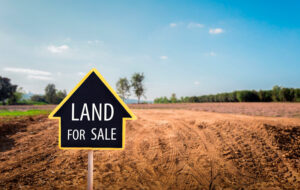 Access to suitable land is a fundamental requirement for a successful homestead. Some states offer more readily available and affordable land than others, allowing you to acquire larger parcels suitable for various agricultural activities. Assessing the price per acre and the availability of expansive tracts of land is crucial when making your decision.
Access to suitable land is a fundamental requirement for a successful homestead. Some states offer more readily available and affordable land than others, allowing you to acquire larger parcels suitable for various agricultural activities. Assessing the price per acre and the availability of expansive tracts of land is crucial when making your decision.
Research which states have an abundance of rural land for sale at reasonable prices to find areas with ample affordable acreage for homesteading. Look at real estate listings for parcels large enough to support your planned activities. Calculate the cost per acre in prospective states to compare values. Consider financing options if needing to finance the land purchase. Start small if funds are limited and expand acreage over time.
3. Water Availability
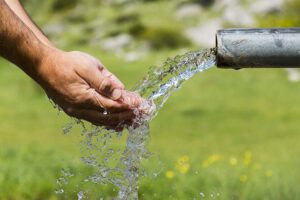 Water is an indispensable resource for any homesteader. It is not only necessary for personal use but also vital for irrigation, nurturing crops, and raising livestock. Consider the average rainfall in different states to ensure an adequate water supply. In particular, if you are considering a state in the western U.S., explore the availability of water rights, as water scarcity can pose challenges.
Water is an indispensable resource for any homesteader. It is not only necessary for personal use but also vital for irrigation, nurturing crops, and raising livestock. Consider the average rainfall in different states to ensure an adequate water supply. In particular, if you are considering a state in the western U.S., explore the availability of water rights, as water scarcity can pose challenges.
Inquire about groundwater resources, access to freshwater lakes and rivers, and water rights policies to determine if water is sufficiently available. Install rainwater collection barrels and cisterns to supplement natural rainfall.
Research if wells are permitted and feasible to provide groundwater. Look at water quality reports to ensure safety and usability of the water supply. Create a water management plan detailing usage and conservation.
4. Homestead Laws
 Homestead laws vary from state to state and can significantly impact your experience as a homesteader. Some states have more favorable laws that provide protection and benefits to those embarking on the homesteading journey. For example, certain states may have generous “homestead exemption” laws that safeguard a specific portion of a homeowner’s equity from creditors.
Homestead laws vary from state to state and can significantly impact your experience as a homesteader. Some states have more favorable laws that provide protection and benefits to those embarking on the homesteading journey. For example, certain states may have generous “homestead exemption” laws that safeguard a specific portion of a homeowner’s equity from creditors.
Study the homestead exemption laws, property tax rates, and other legal protections afforded to homesteaders in each state. Understand the taxes and legal obligations you may have by homesteading in different states. Consult an attorney familiar with homestead laws before selecting a location. Consider liability protections if you plan to earn income from the homestead. Research inheritance laws if passing the homestead to future generations.
5. State and Local Regulations
 State and local regulations, including building codes, zoning laws, and animal regulations, can affect your ability to homestead. Certain states and localities have more restrictive regulations, which might impede your plans for off-grid living or the types and number of animals you can keep. It’s essential to choose a state with regulations that align with your vision for homesteading.
State and local regulations, including building codes, zoning laws, and animal regulations, can affect your ability to homestead. Certain states and localities have more restrictive regulations, which might impede your plans for off-grid living or the types and number of animals you can keep. It’s essential to choose a state with regulations that align with your vision for homesteading.
Investigate the building codes, agricultural ordinances, and zoning restrictions in the area to ensure your plans comply with regulations. Research any permits needed for activities like raising livestock, selling produce, or collecting rainwater.
Create plans flexible enough to work within the regulations. Consult with the local planning office to fully understand all codes and requirements. Consider being an advocate for updated regulations if overly burdensome rules exist.
6. Community
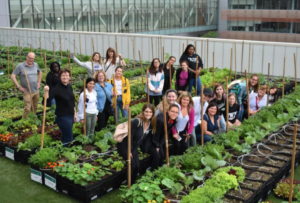 Embarking on a homesteading journey can sometimes feel overwhelming, especially if you are new to the lifestyle. Having a supportive community of like-minded individuals can make a significant difference. Consider states with a larger community of homesteaders, as it can provide you with a valuable network for learning, sharing knowledge, and finding support during the ups and downs of homesteading.
Embarking on a homesteading journey can sometimes feel overwhelming, especially if you are new to the lifestyle. Having a supportive community of like-minded individuals can make a significant difference. Consider states with a larger community of homesteaders, as it can provide you with a valuable network for learning, sharing knowledge, and finding support during the ups and downs of homesteading.
Look for states and rural areas with an established homesteading community to gain mentors, share resources, and find camaraderie. Search online forums and groups to connect with local homesteaders before moving. Attend farming conferences, workshops, and meetups to build relationships. Visit community farming markets to meet neighbors. Offer your skills and labor in trade to build goodwill locally.
The 6 Best States for Homesteading
Now, let’s delve into the six best states for homesteading, taking into account the factors mentioned above and highlighting the unique aspects that make them ideal choices for aspiring homesteaders.
1. Alaska
While Alaska’s harsh winters may seem daunting, it offers exceptional opportunities for homesteaders. The state had programs that offer land to residents for free or at low cost, making it an attractive option for those seeking affordable land. However, it’s essential to be prepared for the challenges presented by the cold climate, as it may require additional planning and resources to ensure a successful homestead.
2. Missouri
Missouri is renowned for its affordable land and fertile soil, making it an excellent choice for homesteaders on a budget. The state’s favorable homesteading laws provide additional incentives for those looking to establish a self-sustaining lifestyle. With its moderate climate, Missouri offers a range of agricultural possibilities, allowing homesteaders to cultivate diverse crops and raise livestock effectively.
3. Tennessee
Tennessee strikes a balance between a moderate climate, affordable land, and a supportive community of homesteaders. The state’s varied geography provides opportunities for different agricultural practices, from horticulture in the east to livestock farming in the west. Tennessee’s welcoming atmosphere and robust homesteading community ensure that you won’t be alone on your journey.
4. Texas
Texas, known for its vast landscapes, offers abundant land options for aspiring homesteaders. The state’s relatively lax building codes make it easier to construct your own home and other necessary structures. However, it’s crucial to consider water availability, as certain regions in Texas face challenges due to limited water resources. Researching specific areas and their access to water will help you make an informed decision.
5. Idaho
Idaho’s stunning landscapes, abundant water supply, and thriving homesteading community make it an attractive choice for individuals seeking a fulfilling homesteading experience. The state’s fertile soil supports diverse agricultural activities, while its scenic beauty adds an element of tranquility to the homesteading lifestyle. The vibrant homesteading community in Idaho ensures ample opportunities for learning, collaboration, and mutual support.
6. Maine
Maine offers affordable land and a growing community of homesteaders, making it an appealing option for those willing to embrace its challenging climate. While the state’s winters can be severe, the summers provide a conducive environment for a variety of crops. Maine’s rich natural resources, such as forests and water bodies, also contribute to its appeal for those seeking a self-sufficient lifestyle close to nature.
Conclusion
Selecting the right state for homesteading is a critical decision that sets the foundation for your self-sustaining lifestyle. Consider the climate, land availability and cost, water accessibility, homestead laws, state and local regulations, and the presence of a supportive homesteading community. Each of the six states mentioned—Alaska, Missouri, Tennessee, Texas, Idaho, and Maine—offers unique advantages and aligns with different preferences and priorities. Take the time to evaluate these factors, explore the specific regions within these states, and make an informed choice that resonates with your homesteading aspirations.
For additional information on acquiring property check out 35 Things to Consider When Buying Rural Property by our partners at Off Grid Living News.
FAQs – Frequently Asked Questions
1. How do I determine the right climate for my homestead?
Choosing the right climate for your homestead depends on the crops and livestock you intend to cultivate. Research the temperature ranges, rainfall patterns, and growing seasons of different regions to find a climate suitable for your desired agricultural activities.
2. Are there any financial benefits to homesteading in Alaska?
Yes, Alaska offers land programs that provide residents with the opportunity to acquire land for free or at a low cost. This can significantly reduce the financial burden of establishing a homestead.
3. Can I build my own house without restrictions in Texas?
Texas generally has more relaxed building codes compared to some other states. This allows homesteaders more flexibility and freedom to construct their own homes and structures, promoting self-sufficiency and customization.
4. What are the benefits of joining a homesteading community?
Joining a homesteading community provides a supportive network of like-minded individuals who share knowledge, offer advice, and provide assistance when needed. Homesteading communities often organize workshops, events, and skill-sharing opportunities, fostering a sense of camaraderie and collective learning.
5. How can I prepare for the challenges of homesteading in Maine?
Homesteading in Maine requires careful preparation for its challenging climate, particularly the winters. Stocking up on supplies, implementing proper insulation and heating systems, and cultivating cold-hardy crops are essential steps to ensure a successful homestead in Maine.
